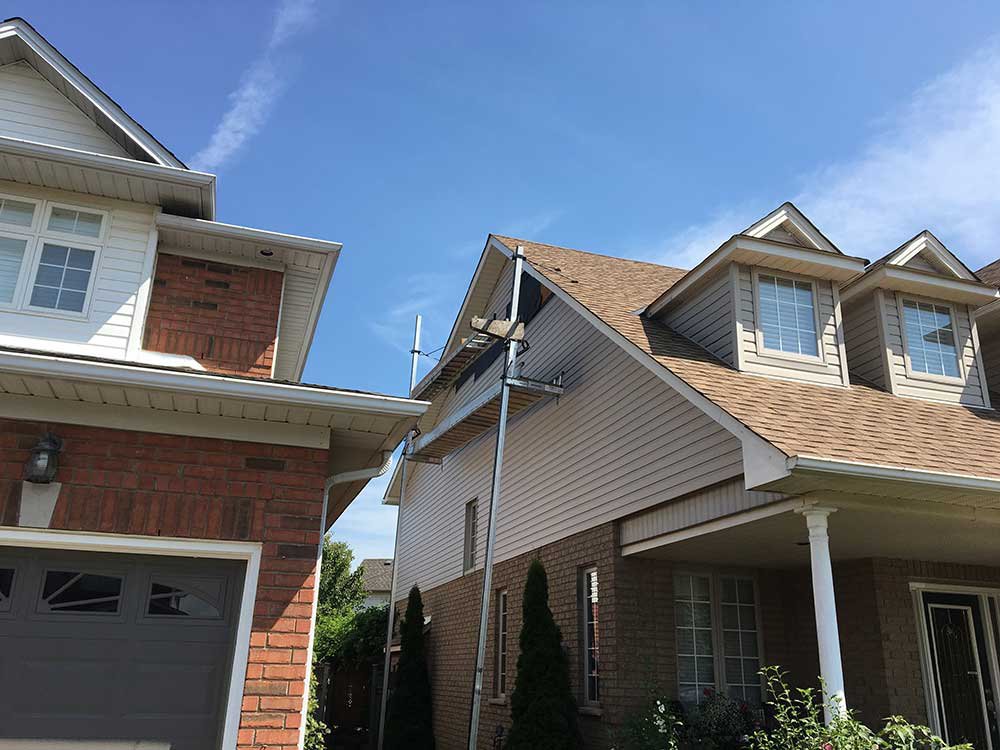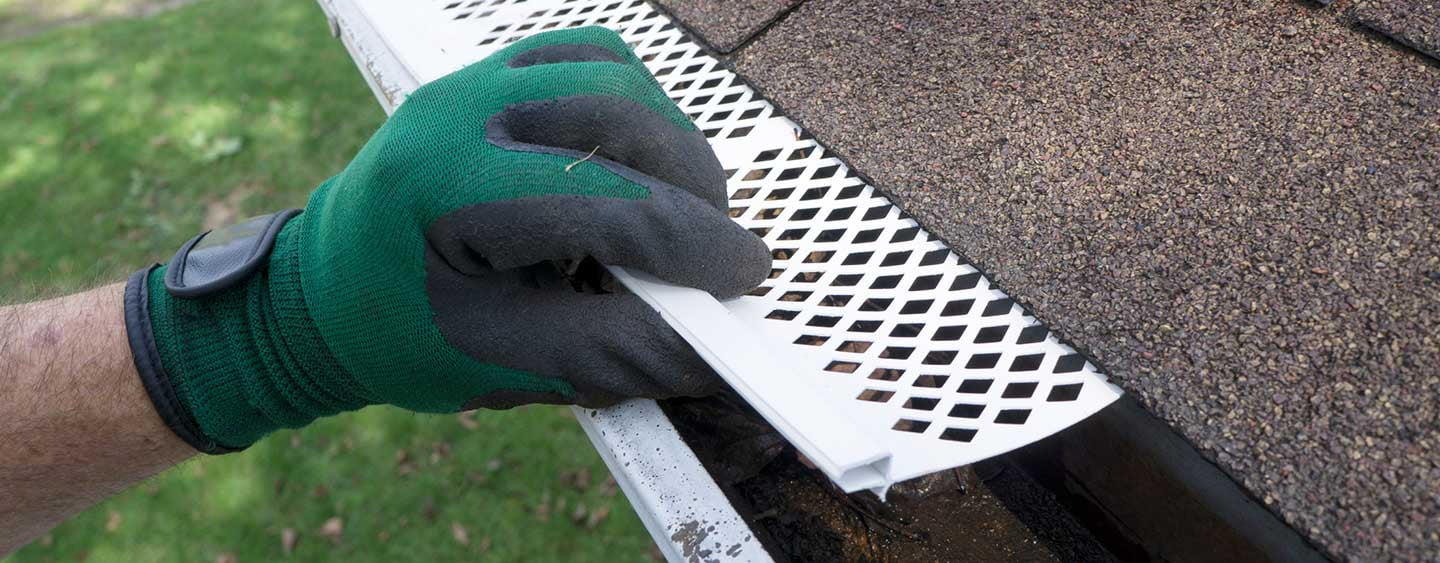
In thius article, How To Maintain Your Roof After Repairs Or Upgrades. After your roof has been repaired or restored, there’s a few things you as a home owner can do to maintain it, and keep it lasting as long as possible. In this article we’ve laid out some of the tasks you can do to keep your roof in great condition once it’s been repaired, to ensure it functions properly for years to come.
If you recently went through roof repairs, you were probably experiencing a few of the common issues a roof can have after years of wear-and-tear, such as leaking, damaged flashing, wildlife intrusions, water pooling, damaged shingles, unforeseen damage or ventilation problems. Years of improper or a lack maintenance will take it’s toll on your roof but there are a few things you can do to make it function and last longer.
The following tasks can be done once every 1 or two years, and will help you catch issues well before they become bigger problems which will save you a lot of money and give you the peace of mind knowing your roof is in tip-top condition.
1. Schedule Regular Maintenance
The one thing you want to do to keep your roof in pristine condition is to talk with your local roofing company about scheduling regular checkups in order to ensure it continues to function properly. On any given day, any number of things can happen that reduce hinder the proper function of your roof and as home owners we seldom discover them until the problem is too far gone.
By maintaining regular maintenance visits, your roofing contractors will be able to mitigate the problems and hinder the issue from getting worse as the years go by.
2. Go Onto Your Roof And Inspect It Yourself
There’s been many occasions where our customers have told us that they went onto their roof themselves and found a problem. By visiting your roof-top and taking your time to look over every nook and cranny, you’ll either find that all is well or that a problem has started.
Usually after your roof has been repaired or upgraded, the work that was done will last many years into the future but, if some unforeseen occurs, (like a tree branch that has caused damage, 0r the damage from extremely strong winds) at least you’ll be aware of it before the problem turns into a bigger one.
Try to get on your roof at least twice a year. A good time is in the early spring when the weather is agreeable, and just before the dead of winter hits.
3. Apply Wildlife Prevention Where Needed
Wild animals can intrude into a home virtually any time of the year and when they do it’s rare that a home owner finds out right away. The average home is not built with animal intrusion protection is applied and are basically always susceptible to intrusions unless wildlife prevention is applied.
There are two ways a roof can be protected from wildlife entries, namely adding high-gauge drip edge to your roof-line which will substantially deter wildlife intrusions. You can also have your roofing company install ridge guard on your roof which will also deter wild animals from being able to break in through susceptible areas of your roof or tearing out your shingles.
4. Trim Overhanging Trees and Branches
Even after repairs or upgrades are done to a roof, it’s still quite susceptible to damage caused by overhanging trees and branches. The older the tree, and the more strong the weather system, is a perfect recipe for disaster when it comes to your roof being damaged by a heavy branch crashing into it, or a tree falling on it.
During the big storm we had a few months ago here in Ontario, we received calls from customers that had recently had roof repairs only to have to get their roof repaired again because of the damage their roof sustained by trees crashing into it.
All this can be avoided by simply ensuring that tree branches are cut at least 6 to twelve feet from your roof while any nearby trees are inspected as to how safe they are around your home.
Falling trees and branches are almost the number one causes of roof damage but the damage can be easily avoided by getting a tree-trimming company out to your property and ensuring there’s a decent distance between your home and any trees on your property.
5. Clean Your Eavestroughs Regularly
A good practice is to always make sure your eavestroughs and gutters and clean from leaves, twigs and other debris.
When your eavestroughs get too clogged and don’t drain properly and regularly, you risk experiencing quite a few issues including:
- water pooling (which can lead to major leaks
- rotting of your fascia boards
- internal wall or ceiling damage
- your eavestroughs can become loose from being constantly weighed down
- water can pool in certain unexpected areas affecting the integrity of your home’s foundation
- in the winter, ice can form in walking areas causing slip-and-fall hazards
- also in the winter, ice can build up on your roof or eavestroughs adding extra pressure to them
One surefire and simple way of reducing the risk of eavestrough clogging is by adding a gutter guard to your eavestroughs which will substantially reduce the risk of the above issues, and make it much more easier to clean regularly.
6. Ensure Attic Insulation Is Up To Code
If your attic insulation is not up to code it can cause your attic to overheat which will create more moisture than it’s meant to handle. An attic’s insulation should always maintain a proper rating of at least R-60.
An overload of moisture in your attic can not only cause issues that you’ll discover in your home but it can also cause damage to important parts of your roof, namely:
- moisture damage to rafters
- damage to the sheathing
- shingle damage
- roofing deterioration
- ice-damns that form on your roof or in your attic
- rust-build damage to metal components on your roof
When your attic insulation isn’t functioning properly, you can also expect irregularly fluctuating energy costs and experience mold and mildew problems which can effect the entirety of your home in general. Let the reader note that attic insulation issues can be caused by animals that have taken up residence in your attic.
7. Inspect Your Chimney Regularly
If you have a chimney it’s advised that you get up onto your roof and check it out at least a few times a year. For one, with an inspection you’ll discover if any wild animals have used it as an entry point into your home. You’ll also discover if there’s any damage to your chimney or if it’s generally falling apart and damaging other sections of your roof.
If your chimney isn’t in good working order you can expect some of the following issues:
- decaying brick and mortar
- leaking flashing system
- increased risk of fires
It’s always advisable to set up regular inspections with your roofing company, and invest in ensuring your chimney is functioning properly.
The Take Home
The bottom line is, the more you maintain your roof – before or after repairs – the longer it will last, and the less problems it will cause you. As is always advised by roofing companies, think about setting up regular inspections after repairs and upgrades in order to ensure that it’s in perfect working order, and you don’t get hit with damage costs that can reach up into the thousands of dollars to repair.





